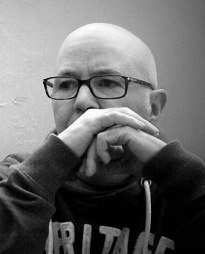 Brandon Ballengée with an endangered alligator snapping turtle. Photograph by Peter Warny.
Brandon Ballengée with an endangered alligator snapping turtle. Photograph by Peter Warny.
.
The Wampanoag people of eastern Massachusetts had a tradition of digging a hole at the site of an important event. A member of the community would then be tasked with maintaining that hole and, once a year, telling the story of what happened there.
History, as we understand it today, is the story we tell ourselves about ourselves. Restless now, rootless, we add to this story, decade after decade, embellishing and embroidering, until, in time, it takes on a life of its own, staggering out of the woods or fields into the halflight, out of the bars or towers or conference rooms into the glow of headlights, streetlights. It feels alien, other. We squint our eyes. This is not who we are. This is not who we were. This has nothing to do with me.
There are many reasons to dig holes.
We plant crops, we plant trees—and why not? We want food, we want shade. We need a place to bury our trash or hide our treasure. Where else should the bodies go? But in these instances we cannot ignore the underlying expectation of exchange, the ritualistic reciprocity: what is removed shall be replaced, what we hide will stay hidden, what we plant shall grow. A seed into a tree. A body into a laser-etched NASCAR headstone.
The Wampanoag cut into the earth where, and in a time when, the earth mattered, and by leaving that cut, by refusing to fill it in, instead filled the landscape with memory, fusing narrative with the land, entwining story and place. For generations the responsibility was passed on: to tend the hole, to tell the story.
Most of our monuments consist of objects added to the landscape: cenotaphs, statues, plaques. Loss symbolized by addition, the absence of something commemorated by the presence of something new. Perhaps we’re afraid of looking into the void created by the lives, the people, the time, the whatever it is that’s gone missing. In this disconnected culture, stories wander placeless. Memories have no home. We seek replacement rather than understanding.
Brandon Ballengée is an artist, biologist, and activist who has dedicated himself to tending absence. Absence, it could be said, is his medium. The disappearing and extinct species that have been and remain his inspiration and focus, in both his artwork and his scientific research, could not have hoped for a better reciter of their stories, linking them to place, but also time, time past, time running out.
Last spring’s Armory Show in Manhattan brought welcome attention to Brandon’s work, specifically to one of his various ongoing projects, Frameworks of Absence. Since 2006 he’s been researching animals that have gone extinct in the Americas over the past four centuries, selecting prints contemporaneous with the species’ demise and then painstakingly cutting the creature’s image from the page, leaving a hole.
There are holes everywhere.
With climate change already threatening the environment, with overhunting and habitat destruction continuing nearly unabated, with predictions that a new mass extinction event is underway, Brandon wants us to see what we’ve already lost, to mourn so that we might act. He is telling a story, a story of this place, of any place made less wild by the disappearance of its insects, animals, birds, all the things that make it a place. This is our story, as it turns out, and it’s one we need to hear.
 The Frameworks of Absence. 2006-Ongoing. Artist cut and burnt historical artifacts. Installed at the Armory Show, New York, NY, 2015. Photograph by Casey Dorobek. Courtesy the artist and Ronald Feldman Fine Arts, New York, NY.
The Frameworks of Absence. 2006-Ongoing. Artist cut and burnt historical artifacts. Installed at the Armory Show, New York, NY, 2015. Photograph by Casey Dorobek. Courtesy the artist and Ronald Feldman Fine Arts, New York, NY.
§
Brandon and I conducted this interview via email starting in late spring, corresponding through the first few weeks of August. He is passionate and thoughtful, and despite the grim context of his work, retains an admirable and hopeful optimism. What follows has been condensed and edited.
Q&A
DARREN HIGGINS: As I began to think about your work and consider what questions I wanted to ask you, I noticed that my six-year-old son was outside studying insects and creating habitats for the ones he caught. So I’d like to start by asking about how you came to be interested in studying nature. You said in a recent interview that “I had a lab in my parents’ basement and I had an art studio in our barn.” Did you ever consider any other career, or was your path set from early on?
BRANDON BALLENGÉE: From my earliest memories, I was always fascinated with aquatic animals and insects. I would document and draw them while trying to understand how they worked and lived. At one point I had so many aquariums in my bedroom that my parents moved me downstairs—they were worried that the floor might fall through! This is where the basement lab came from.
DH: And when did art enter the picture? It sounds like your interests in science and art have always been intertwined.
BB: I have always loved to draw. Drawing was always a natural way for me to try to understand the world. Growing up, I would spend hours looking at the illustrations in field guides and zoology books. Later, as a teenager, I became very influenced by modernist paintings—Motherwell, Kline, Rothko, and others were big inspirations. I even began making large-scale abstract paintings, focused on composition and asking how the eye can be moved through a two-dimensional plain. I was also interested in how colors and forms can influence feeling in a work. I still utilize these formalistic considerations while making art.
Science and art are both ways to explore and understand the world outside and within ourselves. They are often viewed as dichotomous, even complete opposites, coming from one or the other side of the brain; however, human beings are not solely “right or left brained”—we are far more complicated and interface with the world poetically as well as pragmatically every day. Creativity manifests itself through both art and science. The fields are complementary, not opposites.
That said, one of the most challenging times in my life was sorting out how to combine art and science academically and, later, professionally. As an undergrad, I managed to take courses in both and then found a dual Swiss/British graduate-to-Ph.D. program, which let me fully combine my practices in art and science. Here my scientific focus concerned causes and potential impacts of developmental deformities in frogs and toads within agricultural landscapes in England and Canada.
My desire to work with amphibians was a response to the current population crisis they face as more than 40% of known species are considered in decline and more than 200 species have gone missing in recent decades. These are ancient marvels of evolution with a wonderful array of shapes, forms, colors, and behaviors. They are “keystone” species to our terrestrial ecosystems, meaning that when they are gone many other species are impacted. They are disappearing so fast. It is both tragic and alarming. My series of artworks, Malamp Reliquaries, is my artistic response to this study of deformed and declining amphibians, as well as hopefully a means to inspire people to help protect these amazing creatures.
 DFA 156: Persephone. Unique digital-C print on watercolor paper. Cleared and stained Pacific tree frog collected in Aptos, California, in scientific collaboration with Stanley K. Sessions. 45 7/8 x 33 7/8 inches. Courtesy the artist and Ronald Feldman Fine Arts, New York, NY.
DFA 156: Persephone. Unique digital-C print on watercolor paper. Cleared and stained Pacific tree frog collected in Aptos, California, in scientific collaboration with Stanley K. Sessions. 45 7/8 x 33 7/8 inches. Courtesy the artist and Ronald Feldman Fine Arts, New York, NY.
DH: You mentioned species in decline—disappearing or missing species. I’ve been focusing on extinction in my own work recently, which is, I think, one reason why I found your Frameworks of Absence project so profound and moving. How did the idea for that first come to you?
BB: The death of our friends, family, and ourselves is very hard for us to comprehend. Even further, the permanent loss of a group of organisms is an almost abstract idea. So how does one give visual form to this absence? For years I have attempted to create art that captured this phenomenon. I experimented sculpturally using preserved specimens backlit to create silhouettes, to suggest species decline and loss, such as in An Illustrated Key to the Fishes of Jamaica Bay ca. 1974- 2024 AD (2002-04) and the installations the Apparitions (2009-ongoing) made with taxidermy specimens lost in natural-history-museum collections. Also, in my work Collapse (2012), empty jars were placed among a myriad of marine specimens to recall species loss.
 Collapse. Installed at Ronald Feldman Fine Arts, New York, NY, 2012. Mixed-media installation including 26,162 preserved specimens representing 370 species following the 2010 Deepwater Horizon oil spill. Glass, Preffer, and Carosafe preservative solutions. 12 x 15 x 15 feet. In the background: Vertical Fall in the Winter call that dances in the spring nocturnal… 2010/12. From the series A Season in Hell. Unique digital Chromogenic print mounted on aluminum. 64 x 90 inches. Photograph by Varvara Mikushkina. Courtesy the artist and Ronald Feldman Fine Arts, New York, NY.
Collapse. Installed at Ronald Feldman Fine Arts, New York, NY, 2012. Mixed-media installation including 26,162 preserved specimens representing 370 species following the 2010 Deepwater Horizon oil spill. Glass, Preffer, and Carosafe preservative solutions. 12 x 15 x 15 feet. In the background: Vertical Fall in the Winter call that dances in the spring nocturnal… 2010/12. From the series A Season in Hell. Unique digital Chromogenic print mounted on aluminum. 64 x 90 inches. Photograph by Varvara Mikushkina. Courtesy the artist and Ronald Feldman Fine Arts, New York, NY.
For two-dimensional works, I first tried to depict extinct species by drawing silhouettes of them using Japanese ink. Then ink was use to cover depictions of now-gone species in old field guides. Yet the black mass still had visual form. Influenced by Robert Rauschenberg, who erased a piece by Willem de Kooning, I later tried erasing out the animal depictions. The remaining traces of pigment created a kind of ghost-like image, but still there was a presence.
In 2005 I carefully cut a pair of passenger pigeons out of an old guide using an X-Acto blade and surgical scalpel. The altered print minus the avian forms created an intricate structure, still beautiful but incomplete. Visually, this created a kind of void in the picture-scape, like the actual loss of species from real ecosystems. I had found a way to frame absence.
 RIP Passenger Pigeon, 1937/2006. Artist-cut page from the 1937 first edition, Macmillan Publishing Ltd.’s John James Audubon’s The Birds of America, 6 1/2 x 4 1/2 inches. Photograph by David W. Coulter.
RIP Passenger Pigeon, 1937/2006. Artist-cut page from the 1937 first edition, Macmillan Publishing Ltd.’s John James Audubon’s The Birds of America, 6 1/2 x 4 1/2 inches. Photograph by David W. Coulter.
DH: How do you decide which creatures to focus on? And how do you select the artwork to cut out?
BB: For the last two decades I have been collecting information on extinct and declining species. For the Frameworks of Absence, I maintain a database that groups lost species by continent, era, and taxonomic group. My goal is to create a Framework of Absence for each known species that has gone extinct during the Anthropocene.
For selecting the artwork, it is a matter of finding a print or artifact produced at the time in history when the species depicted disappeared. In some cases, these prints are the only visual and physical presence remaining of the species.
DH: I’m really curious about that process: Why do you choose to use an original print, for example, instead of a facsimile? And, as I understand it, you also burn the image that you cut from the print…
BB: Using original historic prints or artifacts is a fundamental concept underlying the Frameworks of Absence. Such “real” artifacts resonate history—a shared time with the species they depict and the cultural landscape of our own species at that moment in history. As the depictions are removed, the Frameworks of Absence create a void in our own history attuned with the loss of actual species gone from nature. I then burn the depictions of the lost animals. This is a personal cremation ceremony that connects me to these lost species.
 The Frameworks of Absence, 2006-ongoing. Funerary urns, ashes. Photograph by Michael Ahn.
The Frameworks of Absence, 2006-ongoing. Funerary urns, ashes. Photograph by Michael Ahn.
The ashes are placed into black glass funerary urns etched with the name of the lost species. People are then asked to scatter the ashes in the place where the species lived. This scattering of ashes is meant as an individual embodied experience for that person—meant to be a deep and transformative experience. I call these rituals Actions of Mourning. Releasing the remains of others is a powerful and life-changing event, a reminder of our own mortality and the fragility of all life.
By cutting such historic objects I hope to question our sense of value. Such artifacts have worth, often in the monetary sense, but more importantly in the sphere of human history and our changing attitudes along with behaviors towards the natural world. As Aldo Leopold said, “We stand guard over works of art, but species representing the work of aeons are stolen from under our noses.”
 Ballengée cutting a burnt hand-colored stone lithograph, “Pied Duck” (Labrador duck) by John James Audubon from the limited Amsterdam edition of Birds of America, etched glass urn, and ashes. Photograph by Anthony Archibald J.
Ballengée cutting a burnt hand-colored stone lithograph, “Pied Duck” (Labrador duck) by John James Audubon from the limited Amsterdam edition of Birds of America, etched glass urn, and ashes. Photograph by Anthony Archibald J.
As we currently find ourselves in the middle of a human-caused mass extinction event re-evaluating our collective value systems and ethics is paramount. Each of our individual everyday actions has an impact on ecosystems and the greater living community. Some positive and some negative, each action in a sense is a value judgment, what we choose to hold dear and protect.
DH: Ritual clearly plays a critical role here. Can you expand a bit on its importance to your work?
BB: Our lives are filled with daily rituals, although these now, in the technologically enhanced world we live in, often commonly involve interfacing more with the virtual than the physical. The late philosopher of science Edward Reed discussed the loss of direct learning experiences in post-technological societies and stated that direct physical or embodied actions of inquiry were becoming “endangered.” More recently, author Richard Louv has talked about a growing “nature-deficit disorder” among youth and adults resulting from an increasing disconnect with experiences in the natural world. The result is a widespread non-understanding of ecosystems, other organisms, and even ourselves as part of a living community. Our connection to nature is becoming absent. In response, I try to engage audiences physically and mentally through actions.
The Actions of Mourning are ritualistic, but not in reference to specific procedures in a religious sense nor grounded in any particular set of beliefs. Instead, they are personal actions that participants perform, when and how they decide. Such intimate actions are a transformative means of connection to other species living and gone.
Likewise, through my participatory ecological field surveys, Eco-Actions, I connect people to local ecosystems through physically immersive experiences, collecting data on aquatic species and reflecting on these experiences after. Philosopher Bruno Latour discussed the idea of science being performative. With my Eco-Actions, participants perform science to study ecosystems while being reminded through art that they are a living part of a larger whole of life.
 Lough Boora EcoActions, 2010. Eco-Actions (public field trips) in Lough Boora, Ireland, in April 2010, organized by Sculpture in the Parkland in celebration of International Save the Frogs Day. Photograph by Kevin O’Dwyer.
Lough Boora EcoActions, 2010. Eco-Actions (public field trips) in Lough Boora, Ireland, in April 2010, organized by Sculpture in the Parkland in celebration of International Save the Frogs Day. Photograph by Kevin O’Dwyer.
DH: Can you talk about your Book of the Dead? Is it a kind of companion piece to the work itself? Do you see it growing into a book in its own right?
BB: It is a complementary component to the overall project. Here pages of the book show close views of the animals’ faces from pre-cut depictions of the Frameworks of Absence. Conceptually, readers look into the eyes of the lost species to have an interpersonal experience. It is available for download for free here.
DH: You referenced Aldo Leopold earlier. In one of his essays, he writes about the numenon, or the essence of a place—”The grouse is the numenon of the north woods.” What do you think has been, and is being, lost with these extinctions?
BB: What’s being lost is our collective legacy as living beings among a huge community of other living beings on this remarkable planet.
DH: But what happens to places when they lose their presiding numenon? Though there is no one alive who can remember the wild “biological storm” (another Leopold line) of the passing flocks, what is North America today, for example, without the passenger pigeon?
BB: Sadly, it is less profound. It’s a less profound place. It’s nearly impossible to imagine the skies darkened by passenger pigeons or the lesser-known Rocky Mountain locust.
 RIP Rocky Mountain Locust: After L. Trouvelot, 1880/2015. Artist cut and burnt halftone lithographs, etched glass urn, and ashes, 14 x 27 3/8 inches. Photograph by Casey Dorobek. Courtesy the artist and Ronald Feldman Fine Arts, New York, NY.
RIP Rocky Mountain Locust: After L. Trouvelot, 1880/2015. Artist cut and burnt halftone lithographs, etched glass urn, and ashes, 14 x 27 3/8 inches. Photograph by Casey Dorobek. Courtesy the artist and Ronald Feldman Fine Arts, New York, NY.
 Detail: RIP Rocky Mountain Locust: After L. Trouvelot.
Detail: RIP Rocky Mountain Locust: After L. Trouvelot.
However, we still have a wonderful diversity of life and ecosystems here in the United States. For example, the Appalachian Mountains alone account for the highest diversity of salamander species on the planet. Although, we have already lost at least one that we are aware of—the Ainsworth Salamander, which disappeared from Mississippi.
 RIP Ainsworth’s Salamander: After James Lazell, 1998/2015. Artist cut and burnt photolithograph from scientific publication, etched glass urn, and ashes. 12 7/8 x 15 7/8 inches. Photograph by Casey Dorobek. Courtesy the artist and Ronald Feldman Fine Arts, New York, NY.
RIP Ainsworth’s Salamander: After James Lazell, 1998/2015. Artist cut and burnt photolithograph from scientific publication, etched glass urn, and ashes. 12 7/8 x 15 7/8 inches. Photograph by Casey Dorobek. Courtesy the artist and Ronald Feldman Fine Arts, New York, NY.
Much of this richness of life we still have is under imminent threat and it should be a national priority to preserve these species and the habits they need to survive. Such actions would transform the role of our species and are ethical, as suggested by Leopold when he came up with his idea of the “land ethic.” As he stated, “a land ethic changes the role of Homo sapiens from conqueror of the land-community to plain member and citizen of it.” Leopold suggested a paradigm shift in outlooks toward nature, ourselves, and seeing the connection between the two.
DH: You are an artist and a biologist, but you’re also an activist: Do you hope to influence your audience in a particular way?
BB: Yes, to inspire discussion and actions toward conservation. Often people feel that environmental problems are too large and too widespread for individuals to make a difference. This is absolutely not the case. All of our individual actions every day have an influence on ecosystems and biodiversity: what we chose to eat; how we live; where we live; how we travel; if we own land, what to do with it; how we discuss these ideas with others; and on an on. We are part of a larger living community and can individually and collectively make large differences.
In the 1990s environmental workers Silvio Funtowicz and Jerome Ravetz came up with the concept of “post-normal science,” which suggested using the tools of varied disciplines and the expertise of local stakeholders to address complex social and ecological issues where risks are high and results urgent. Today we find ourselves globally in a “post-normal” situation, as such siloed disciplinary approaches fall short. However, stakeholders from diverse backgrounds working in creative collaborations can bring increased complexity to real-world problem-solving.
DH: I imagine that it can sometimes be a challenge to strike the right balance between art and activism.
BB: When I first began exhibiting my work in NYC in the 1990s it was critiqued as being too “activist” or “science and not art.” As a result, I primarily exhibited work in Europe for almost a decade. Times have changed now, though, and the U.S. art world seems to be more open and supportive of conservation issues addressed through art. Globally, climate change, species loss, and ecosystem collapse are much more a part of our collective vernacular now. Perhaps this growing awareness and concern for the environment is an emerging adaptation for our own species survival.
DH: Do you chose galleries or exhibition locations based on who you might have a chance to reach or influence?
BB: As much as possible, I try to exhibit works in venues that allow me reach audiences with different cultural and disciplinary backgrounds from my own. It’s important to start to have a dialogue, look for common ground, and realize that we all as humans have an equal stake in what is being lost ecologically.
 Troy EcoActions. Eco-Action (public field trip) in Troy, NY, in August 2014, with residents from the underprivileged North Troy neighborhood in collaboration with the Sanctuary for Independent Media. Photograph by Kathy High.
Troy EcoActions. Eco-Action (public field trip) in Troy, NY, in August 2014, with residents from the underprivileged North Troy neighborhood in collaboration with the Sanctuary for Independent Media. Photograph by Kathy High.
DH: Despite any progress that’s been made, I admit that I can’t help but fixate on what’s being lost. I started thinking of this earlier when you talked about the Actions of Mourning, but I wonder, at the risk of ending on a dark note, do you, yourself, mourn? And is mourning a critical element in your work?
BB: Yes, without mourning there is no remembering. In the remembering we can choose to take steps to stop further loss of life through our everyday actions and long-term planning along with creative means of conservation. Such actions are just, the time is now, and our own long-term survival along with that of numerous other species is at stake.
As conservationist Laurens van der Post said, “If life on earth were to survive, not a single man, plant, bird, or animal must be allowed to lose its life except through some great necessity of life itself. And in the losing all men should join in with every plant and animal and bird to praise it and mourn its passing as that of something infinitely precious that had given life the service for which it had been conceived and rendered itself well.” Let us not forget so that we may save.
 RIP Glaucous Macaw: After Gustav Mützel. 1878/2014. Artist cut and burnt hand-highlighted chromolithograph, etched glass urn, and ashes, 18 5/8 x 14 5/8 inches. Photograph by Casey Dorobek. Courtesy the artist and Ronald Feldman Fine Arts, New York, NY.
RIP Glaucous Macaw: After Gustav Mützel. 1878/2014. Artist cut and burnt hand-highlighted chromolithograph, etched glass urn, and ashes, 18 5/8 x 14 5/8 inches. Photograph by Casey Dorobek. Courtesy the artist and Ronald Feldman Fine Arts, New York, NY.
—Brandon Ballengée and Darren Higgins
.
Darren Higgins is a writer, editor, and artist living in Waterbury Center, Vermont, with his wife, two sons, and a cat who never comes when she’s called. A graduate of the Vermont College of Fine Arts, he has written poems and stories for a variety of publications, essays for a couple of local newspapers, and commentaries for Vermont Public Radio.
.














 After the Vote to Mass Discontinue Unmapped Invisible Town Roads
After the Vote to Mass Discontinue Unmapped Invisible Town Roads Since Mars won’t be this close to Earth again
Since Mars won’t be this close to Earth again
 roc
roc Nesting Ravens
Nesting Ravens
 11 Sentences
11 Sentences

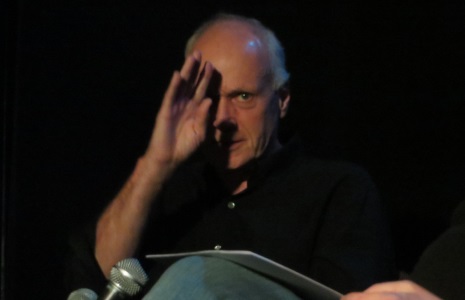







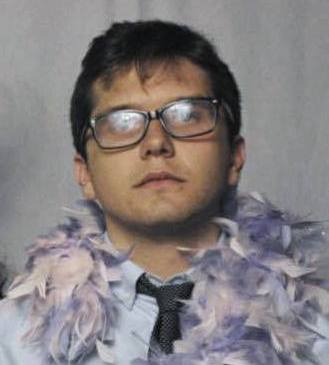















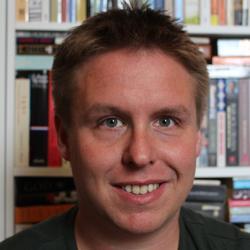


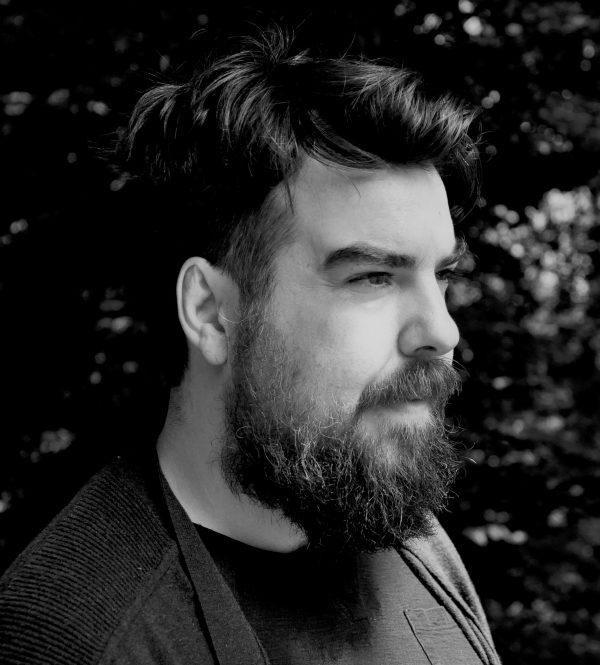
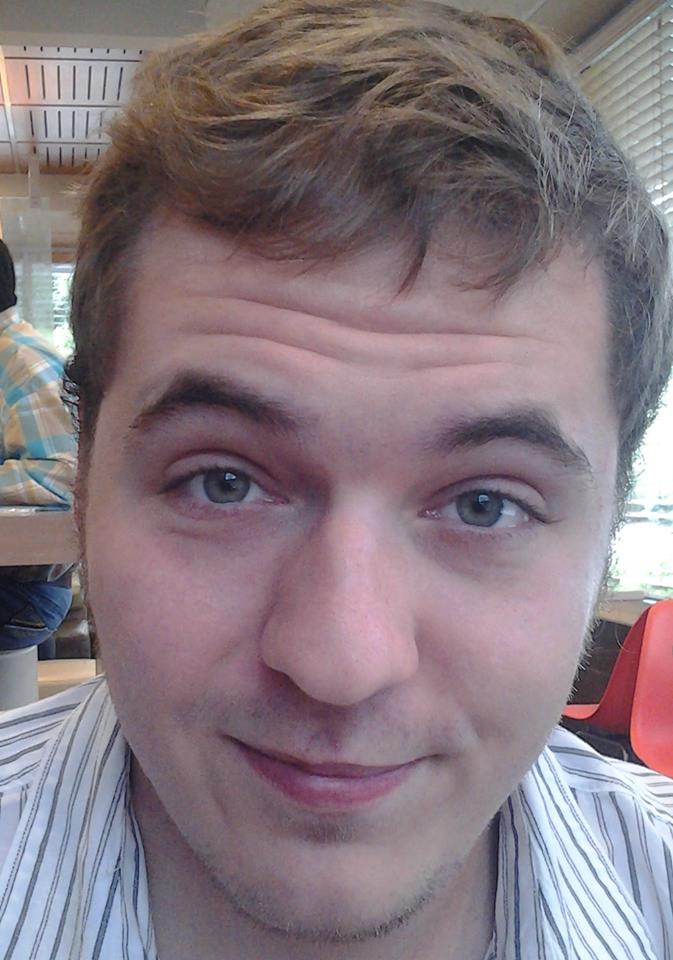
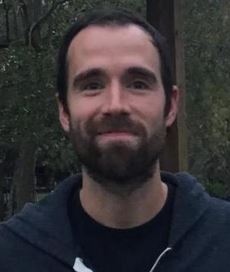


 A gallerist in Saratoga Springs for over 15 years, visual artist & poet
A gallerist in Saratoga Springs for over 15 years, visual artist & poet 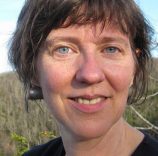
 Patrick O’Reilly was raised in Renews, Newfoundland and Labrador, the son of a mechanic and a shop’s clerk. He just graduated from St. Thomas University, Fredericton, New Brunswick, and will begin work on an MFA at the University of Saskatchewan this coming fall. Twice he has won the Robert Clayton Casto Prize for Poetry, the judges describing his poetry as “appealingly direct and unadorned.”
Patrick O’Reilly was raised in Renews, Newfoundland and Labrador, the son of a mechanic and a shop’s clerk. He just graduated from St. Thomas University, Fredericton, New Brunswick, and will begin work on an MFA at the University of Saskatchewan this coming fall. Twice he has won the Robert Clayton Casto Prize for Poetry, the judges describing his poetry as “appealingly direct and unadorned.”
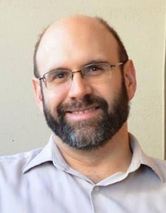 Mark Sampson has published two novels – Off Book (Norwood Publishing, 2007) and Sad Peninsula (Dundurn Press, 2014) – and a short story collection, called The Secrets Men Keep (Now or Never Publishing, 2015). He also has a book of poetry, Weathervane, forthcoming from Palimpsest Press in 2016. His stories, poems, essays and book reviews have appeared widely in journals in Canada and the United States. Mark holds a journalism degree from the University of King’s College in Halifax and a master’s degree in English from the University of Manitoba in Winnipeg. Originally from Prince Edward Island, he now lives and writes in Toronto.
Mark Sampson has published two novels – Off Book (Norwood Publishing, 2007) and Sad Peninsula (Dundurn Press, 2014) – and a short story collection, called The Secrets Men Keep (Now or Never Publishing, 2015). He also has a book of poetry, Weathervane, forthcoming from Palimpsest Press in 2016. His stories, poems, essays and book reviews have appeared widely in journals in Canada and the United States. Mark holds a journalism degree from the University of King’s College in Halifax and a master’s degree in English from the University of Manitoba in Winnipeg. Originally from Prince Edward Island, he now lives and writes in Toronto.
